Mother Ayahuasca Medicine
Health Benefits, Side Effects, and Safety Guide
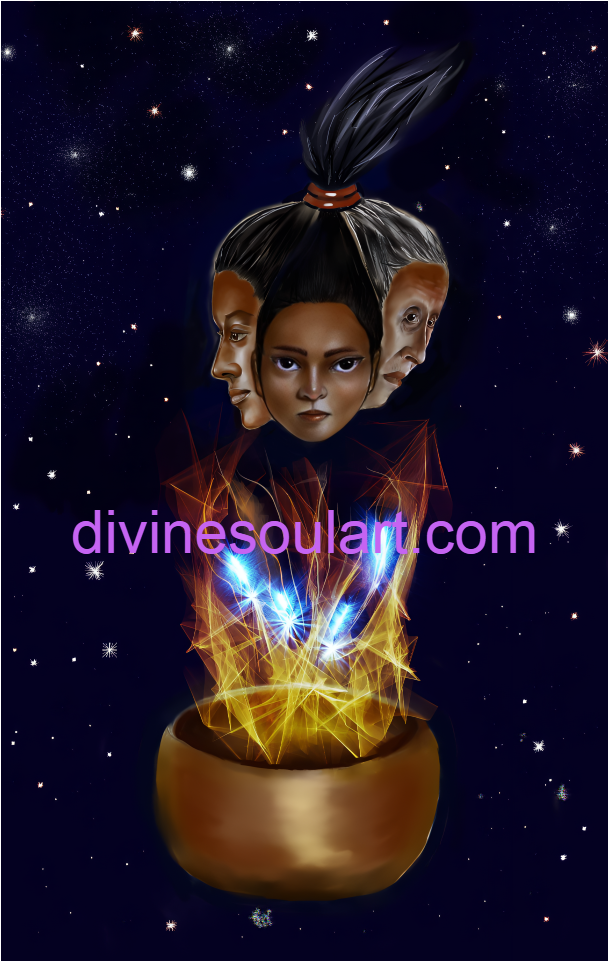 Mother Ayahuasca - Sacred Plant Medicine
Mother Ayahuasca - Sacred Plant MedicineMother Ayahuasca Medicine
Mother Ayahuasca Medicine is a spiritual entity associated to the traditional Amazonian plant medicine. She embodies the spirit of the Amazonian jungle.
During a recent trip to Iquitos, Peru, the image above was presented to me. Additionally, the following message was given:
She is the spirit of the jungle.
She is a young girl.
She is a young woman.
She is an old woman.
She is all in one.
"For those who genuinely seek Mother Ayahuasca with good intentions, she offers healing, guidance and wisdom."
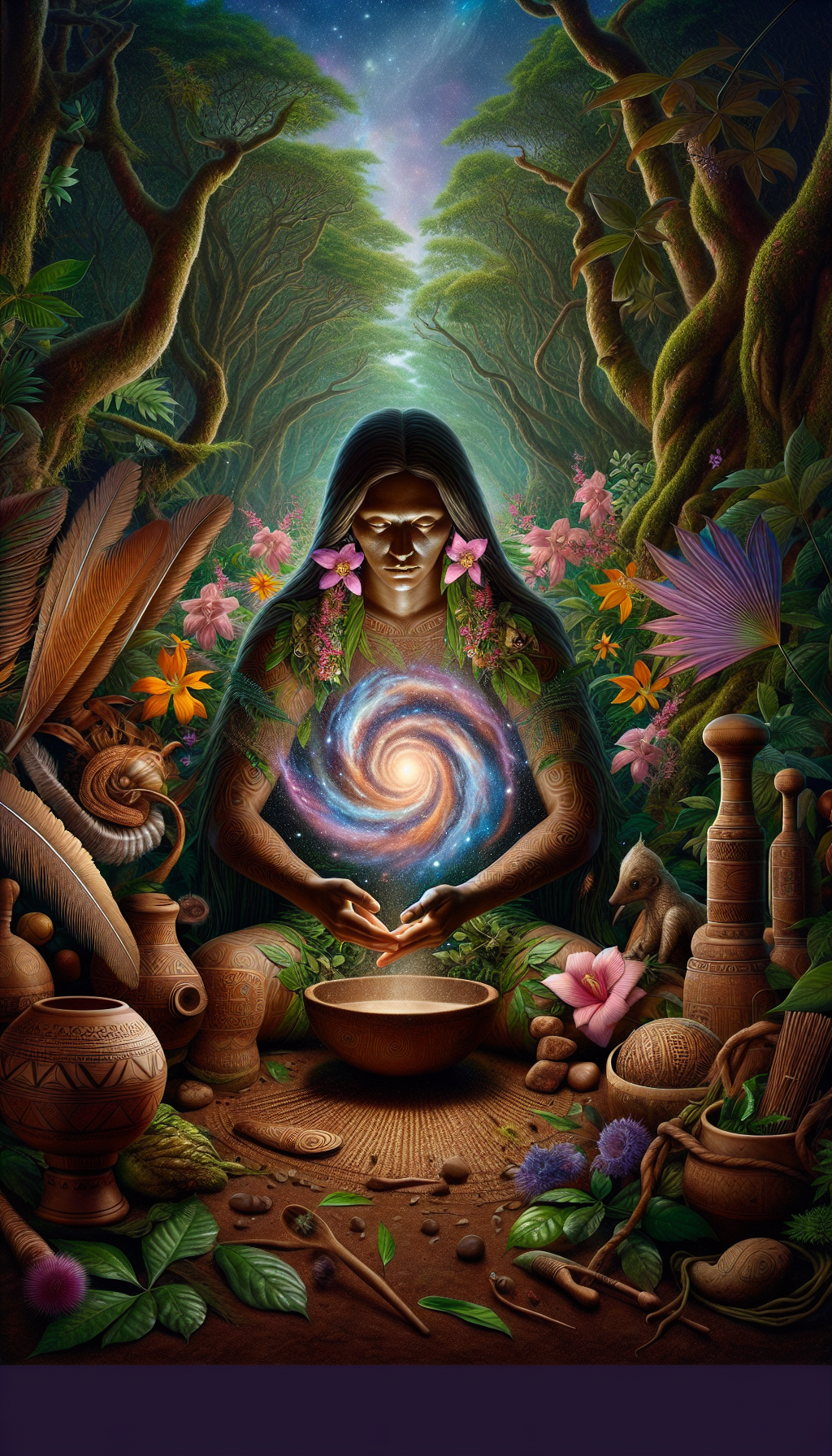 Mother Ayahuasca - Ayahuasca Ceremonies - Ayahuasca Vine by Tai
Mother Ayahuasca - Ayahuasca Ceremonies - Ayahuasca Vine by TaiWhat is Ayahuasca?
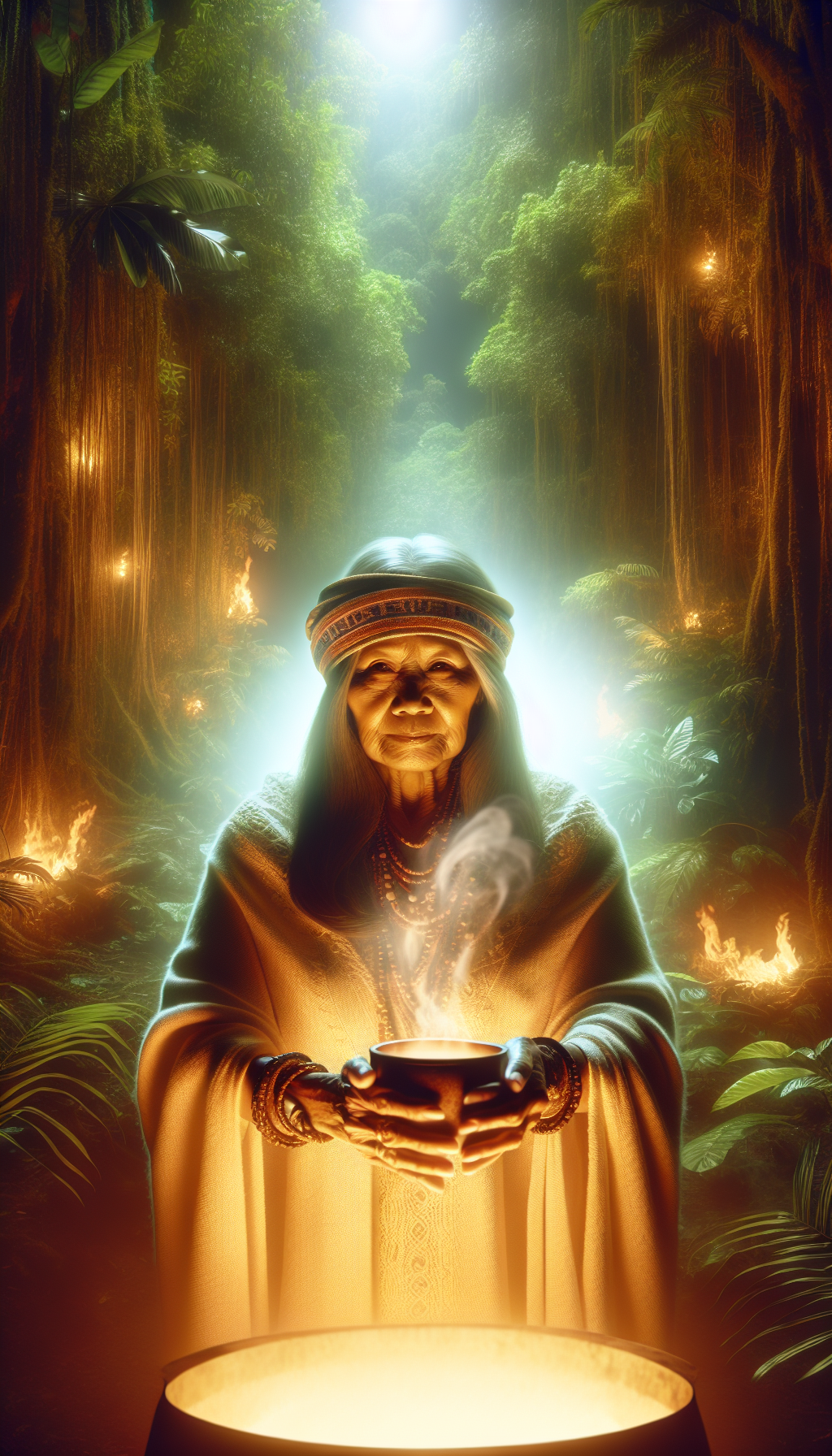 Mother Ayahuasca- traditional brew - connection to the spirit world
Mother Ayahuasca- traditional brew - connection to the spirit worldAyahuasca, psychedelic plant brew, holds a revered place in the spiritual and cultural practices of South America indigenous tribes. The word ‘ayahuasca’ translates to ‘vine of the soul’ in Quechua, a fitting name for a brew that promises deep, transformative journeys. Archaeological evidence suggests the use of psychoactive plants in this region dating back to 1500-2000 B.C., underscoring the ancient roots of this practice. Historically, ayahuasca was primarily used by indigenous people in Peru, Brazil, Colombia, and Ecuador before its popularity spread globally.
The traditional use of ayahuasca involves ayahuasca ceremonies aimed at healing various psychosomatic issues. Ayahuasca ceremonies are not just rituals; they are ancient knowledge and profound spiritual experiences that have been passed down through generations.
Indigenous people have used ayahuasca for over a thousand years, often in combination with other sacred plants, to facilitate a deeper understanding and communication with the spirit world, creating a spiritual awakening. These ceremonies also provide significant insights into both personal and collective well-being and opportunities for self discovery
Today, ayahuasca’s use has transcended geographic and cultural boundaries, finding a place in modern therapeutic settings and spiritual retreats. This expansion has led to a growing interest in the scientific community to study ayahuasca and its effects on the human mind and body, as highlighted by the global ayahuasca survey.
As we explore further, understanding the preparation and ceremonial use of ayahuasca will provide deeper insights into its profound impact.
How Ayahuasca is Used
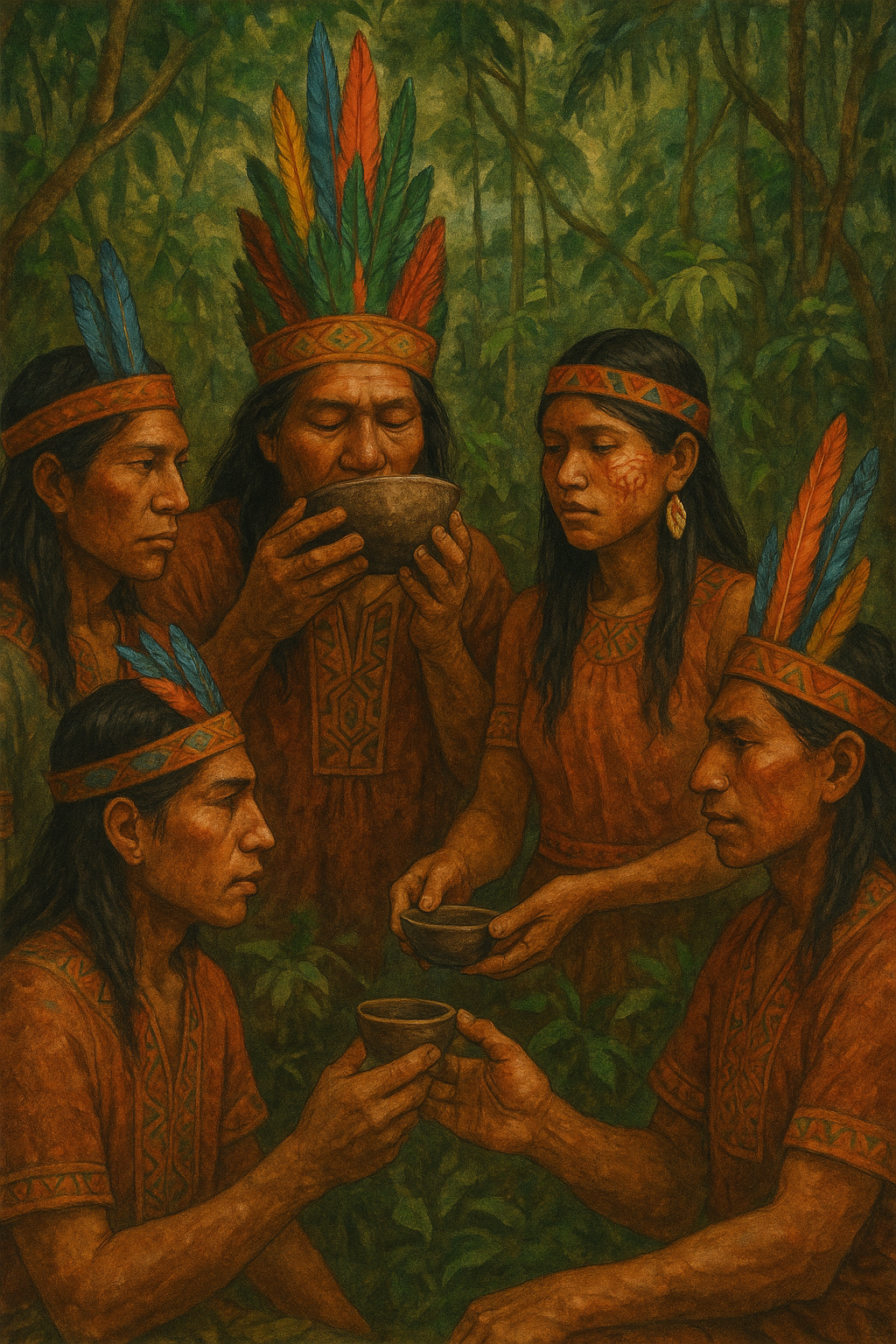 Indigenous cultures and Indigenous people drink ayahuasca
Indigenous cultures and Indigenous people drink ayahuascaThe preparation of ayahuasca brew is a meticulous process involving the boiling of the Banisteriopsis caapi vine (ayahuasca vine) and the leaves of Psychotria viridis. These two primary ingredients are combined to create a potent psychoactive ayahuasca brew or plant medicine that is central to the ayahuasca encounter. The Banisteriopsis caapi vine or ayahuasca vine contains compounds known as monoamine oxidase inhibitors (MAOIs), which prevent the breakdown of DMT—the active hallucinogenic compound in Psychotria viridis—allowing it to exert its powerful effects on the brain.
Ayahuasca ceremonies typically take place at night in a ceremonial space designed to create a safe and sacred environment for the ayahuasca users. These settings are crucial as they enhance the emotional and hallucinogenic experiences that are central to the ayahuasca journey into the spiritual world. Participants often report intense emotions and vivid hallucinations, which can be both enlightening and challenging. The role of the shaman or facilitator is pivotal, guiding participants through their experiences and helping them navigate the often tumultuous emotional landscapes that arise, such as the release of inner emotional wounds and self discovery.
The ritualistic aspect of ayahuasca use cannot be overstated. The ceremonies are deeply rooted in tradition and are designed to foster a sense of community and mutual support among ritual users and ritual ayahuasca users. This communal aspect is vital, as it provides a framework for individuals to process their experiences and integrate the insights gained during the ceremony.
The transformative potential of these ceremonies has made ayahuasca a focal point in discussions about alternative therapeutic practices and spiritual healing.
Effects of Ayahuasca on the Human Body
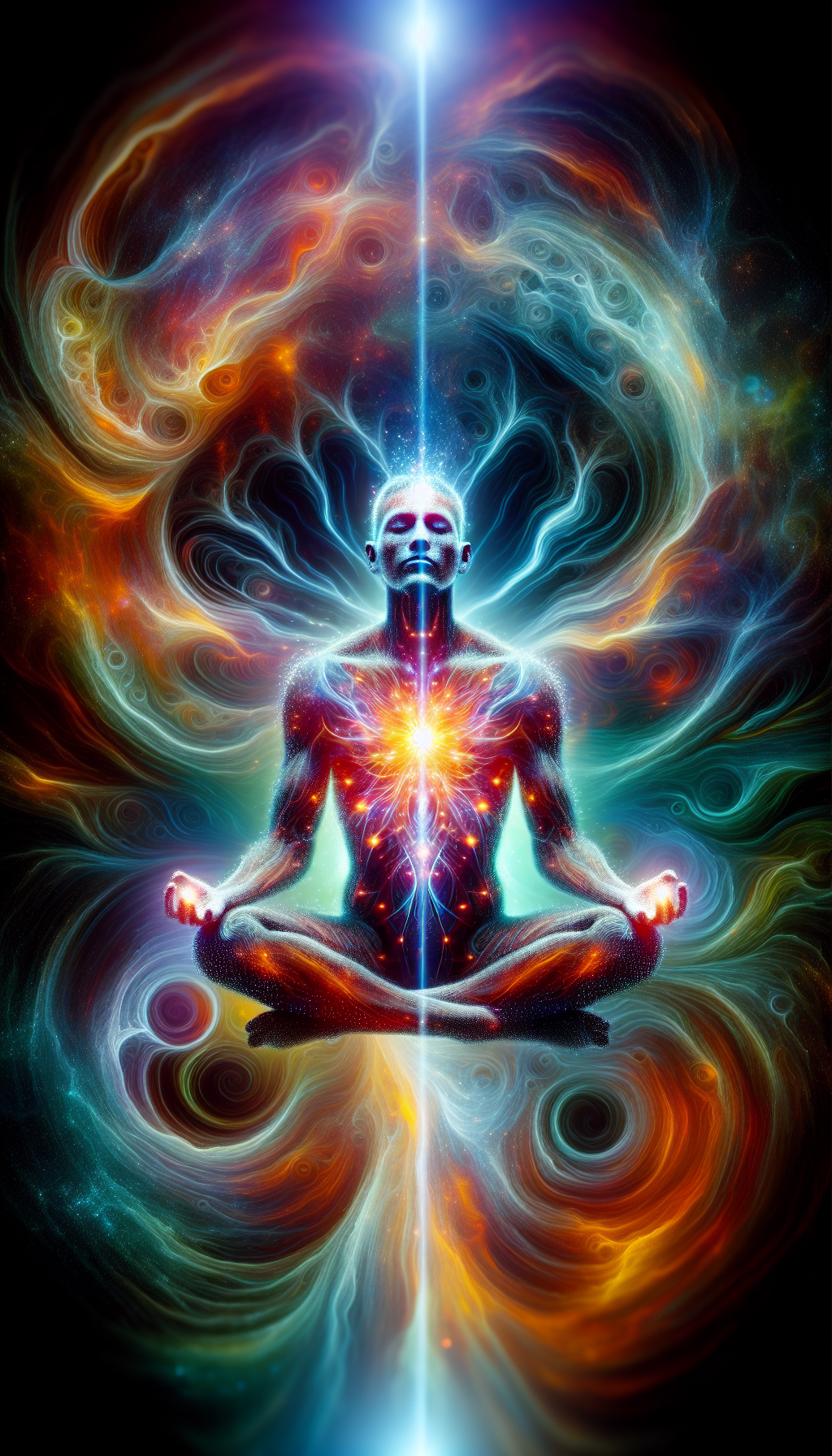 Mother Ayahuasca - Connecting to the Spiritual World
Mother Ayahuasca - Connecting to the Spiritual WorldThe effects of ayahuasca are profound and multifaceted, encompassing both positive and negative experiences. Understanding these effects is crucial for anyone considering an ayahuasca encounter. From the intense internal focus and altered states of consciousness to the potential for rapid antidepressant effects, ayahuasca’s impact on the mind and body is complex and significant.
Let’s explore these effects in detail, starting with the positive outcomes reported by users and researchers alike.
The Positive Effects of Ayahuasca
Ayahuasca has shown significant potential in improving mental health outcomes, particularly for individuals struggling with anxiety, depression, and substance use disorders. Studies have demonstrated that ayahuasca can reduce the incidence of mental health problems and improve the quality of life for many users. This is partly due to its anxiolytic properties, which help alleviate anxiety without increasing the risk of developing new psychopathologies.
Observational studies have highlighted ayahuasca’s ability to enhance cognitive function and mental well-being. Many participants report a heightened and profound sense of clarity and insight following their ayahuasca plant medicine encounters, which can lead to lasting positive changes in their mental health. These therapeutic benefits are not only limited to the immediate aftermath of the ceremony but can extend for weeks or even months, providing sustained relief from psychological distress.
The therapeutic potential of ayahuasca plant medicine is further supported by its ability to promote emotional healing and personal growth. The intense introspection and emotional release that occur during an ayahuasca session can help individuals confront and process unresolved traumas, leading to profound insights and psychological healing. This makes ayahuasca plant medicine a powerful tool for those seeking to overcome deep-seated emotional issues, achieve a greater sense of inner peace, and personal healing.
Negative Effects of Ayahuasca
Despite its many potential benefits, the ayahuasca brew is not without its risks and adverse effects. One of the most common side effects reported by ayahuasca users is vomiting, often referred to as “the purge.” This physical reaction is typically seen as a form of cleansing, although it can be quite distressing for participants. Nausea and other transient gastrointestinal issues are also frequently reported.
Psychologically, the ayahuasca brew can lead to challenging experiences, including intense emotional discomfort, fear, and even paranoia. These adverse effects are more common among participants with pre-existing psychiatric conditions, highlighting the importance of careful screening and controlled settings to ensure the safety of all participants. Monitoring by experienced facilitators is crucial to managing these negative experiences and providing support as needed.
Persistent adverse effects, though generally mild, have been reported by some participants. Factors such as the individual’s mood, environment, and mental health status can significantly influence the nature of the ayahuasca encounter. Ensuring a supportive and controlled environment is essential to mitigate these risks and enhance the overall safety of ayahuasca use.
Ayahuasca and Mental Health
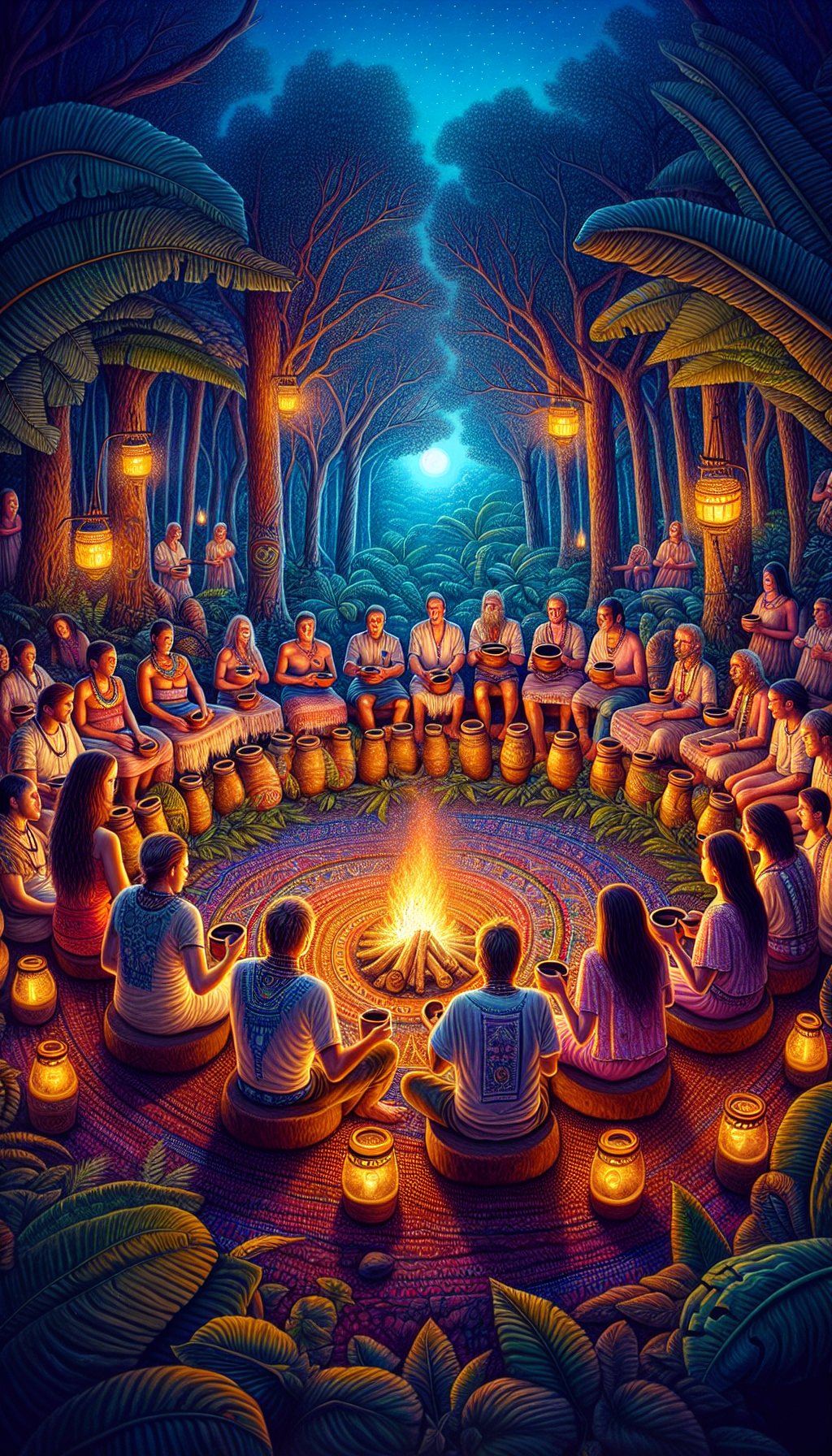 Mother Ayahuasca healing ayahuasca ceremonies
Mother Ayahuasca healing ayahuasca ceremoniesThe relationship between ayahuasca and mental health is a topic of growing interest among researchers and practitioners. Ayahuasca has been associated with significant improvements in mental health conditions, including depression and anxiety. However, the intense emotional experiences induced by the ayahuasca brew can also lead to temporary distress, making it essential to approach its use with caution.
Let’s delve into the clinical trials that have explored ayahuasca’s efficacy and its broader therapeutic potential.
Ayahuasca Clinical Trials
Clinical trials have provided valuable insights into the therapeutic benefits of ayahuasca, particularly for treating psychiatric disorders. One notable finding is the significant reduction in depressive symptoms observed in individuals following a single dose of ayahuasca compared to a placebo. These studies highlight ayahuasca’s potential as a rapid-acting antidepressant, offering hope for individuals with treatment-resistant depression.
The active compound in ayahuasca, DMT, acts as a 5-HT2A agonist, which plays a crucial role in its psychoactive effects. This neurochemical mechanism, along with other pharmacological profiles, distinguishes ayahuasca from other psychedelic drugs like psilocybin. Research indicates that approximately 59.2% of individuals are interested in taking ayahuasca for therapeutic purposes, underscoring its growing appeal as an alternative treatment option for psychoactive drugs and the psychedelic drug experience.
These clinical trials emphasize the importance of conducting ayahuasca sessions in controlled environments to ensure participant safety and maximize therapeutic outcomes. The ritual context, often incorporated into these trials, enhances the psychological and spiritual benefits of ayahuasca, providing a holistic approach to mental health treatment.
Therapeutic Potential
Ayahuasca’s therapeutic potential extends beyond its immediate antidepressant effects. Longitudinal studies suggest that the positive impact on depressive symptoms can last for several months after a single dose. This sustained benefit is a testament to ayahuasca’s profound emotional and cognitive effects, which facilitate personal insights and psychological healing.
The combination of emotional release and cognitive insights during an ayahuasca session provides a comprehensive approach to mental health treatment. Traditional ayahuasca ceremonies emphasize the importance of the ritual context, which can significantly enhance the psychological and spiritual benefits of the experience. This holistic approach is particularly beneficial for individuals with treatment-resistant major depressive disorder, who have shown remarkable improvements in open-label clinical studies, according to a mental health clinician.
Ayahuasca’s ability to induce intense introspection and vivid imagery contributes to its unique therapeutic potential. Research indicates that these experiences are associated with the modulation of DMN activity, which plays a crucial role in self-referential thought and cognitive function. This makes ayahuasca a powerful tool for mental health treatment, offering a unique combination of emotional, cognitive, and spiritual healing.
Ayahuasca and Addiction Treatment
Ayahuasca has demonstrated significant potential in treating substance use disorders, particularly drug and alcohol dependence. The unique psychoactive properties of ayahuasca, combined with traditional rituals, create a powerful therapeutic environment that aids in addiction recovery. This holistic approach is vital for its therapeutic efficacy, as it integrates psychological healing with spiritual practices.
The context in which ayahuasca is used plays a crucial role in its effectiveness for addiction treatment. Rituals and religious elements incorporated into ayahuasca ceremonies enhance the therapeutic potential, providing a structured and supportive environment for participants. This setting allows individuals to confront and process the underlying issues contributing to their addiction, leading to lasting recovery.
Studies have shown that ayahuasca can significantly reduce cravings for substances like alcohol and tobacco, making it a valuable tool in addiction treatment. The integration of psychological and spiritual healing in ayahuasca ceremonies offers a comprehensive approach to addiction recovery, helping individuals achieve sustained sobriety and improved mental health.
Safety and Risks of Ayahuasca
Safety is a paramount concern when considering ayahuasca use. Participants who undergo health evaluations before their first ayahuasca experience tend to report higher satisfaction with safety measures. These evaluations help identify potential risks and ensure that individuals are physically and mentally prepared for the intense experiences that ayahuasca can induce.
One of the primary safety concerns with ayahuasca is its interaction with other medications, particularly those that affect serotonin levels. The presence of MAOIs in ayahuasca can lead to dangerous interactions with serotonergic drugs, making it crucial to avoid combining ayahuasca with certain medications. Further research is needed to fully understand the risks of these interactions and develop guidelines for safe use.
Despite these risks, ayahuasca is generally considered safe when used in controlled settings with proper supervision. The potential for dependence on ayahuasca is extremely limited, and long-term use does not negatively impact cognitive functioning. However, it is essential to approach ayahuasca use with caution and to prioritize safety measures to minimize the risk of adverse effects.
Ayahuasca Tourism
Ayahuasca tourism has become a booming industry, drawing individuals from around the world to South America in search of healing and enlightenment. The allure of participating in an authentic ayahuasca ceremony, guided by experienced shamans, is a powerful draw for many. This surge in interest has had significant economic impacts on local communities, particularly in regions like Iquitos, Peru, where ayahuasca retreats generate millions of dollars annually.
However, the commercialization of ayahuasca experiences has also raised concerns about the potential dilution of traditional practices. As more tourists flock to these retreats, there is a risk that the ceremonies may cater more to the expectations of Western visitors rather than adhering to the authentic rituals and intentions of indigenous traditions. This shift can create new wealth hierarchies within indigenous communities and may even exclude locals from participating in their own cultural practices.
Ethical considerations are paramount in this context. It is crucial to ensure that ayahuasca tourism benefits local communities and respects their traditions. Participants should seek out retreats that prioritize cultural sensitivity and ethical engagement, supporting the preservation of indigenous practices while providing a safe and transformative experience.
Legal and Ethical Issues
The legal status of ayahuasca varies significantly across the globe, reflecting a complex and often contradictory landscape. In the United States, the ayahuasca vine is illegal due to the presence of DMT, a substance classified as Schedule I under the Controlled Substances Act. However, certain religious groups have secured exemptions for its ceremonial use, highlighting the nuanced legal considerations surrounding this psychoactive ayahuasca brew and the broader context of illicit drugs.
In contrast, some South American countries allow the traditional use of ayahuasca, recognizing its cultural and spiritual significance. However, even within these regions, the legal framework can be inconsistent, with some areas imposing strict regulations or outright bans. This patchwork of laws creates challenges for both practitioners and researchers, complicating efforts to study the ayahuasca vine and its effects in a systematic manner.
Ethical engagement with ayahuasca traditions is essential, especially in the context of its growing popularity in the West. Participants should be aware of who leads the ceremonies and how retreats benefit local communities, ensuring that their involvement supports the preservation and respectful practice of indigenous traditions. Clear regulations and cultural sensitivity are key to navigating the ethical landscape of ayahuasca use.
Neurobiological Insights
Recent research has shed light on the neurobiological effects of ayahuasca, revealing its profound impact on brain structure and function. One of the most notable findings is the significant reduction in activity within the Default Mode Network (DMN), particularly in the Posterior Cingulate Cortex and the medial Prefrontal Cortex. This decrease in DMN activity is associated with altered states of consciousness and introspection, similar to those observed in meditation and sleep.
Functional magnetic resonance imaging (fMRI) studies have provided further insights, showing decreased functional connectivity within the DMN, especially in the PCC/Precuneus area. Despite this reduction, the anti-correlation between the DMN and the Task-Positive Network remains unchanged, highlighting the unique neurobiological profile of ayahuasca.
These findings have sparked interest in the potential therapeutic benefits of ayahuasca for contemporary psychiatric illness, as they suggest a reorganization of brain activity that could facilitate emotional and cognitive healing.
Preparation for an Ayahuasca Experience
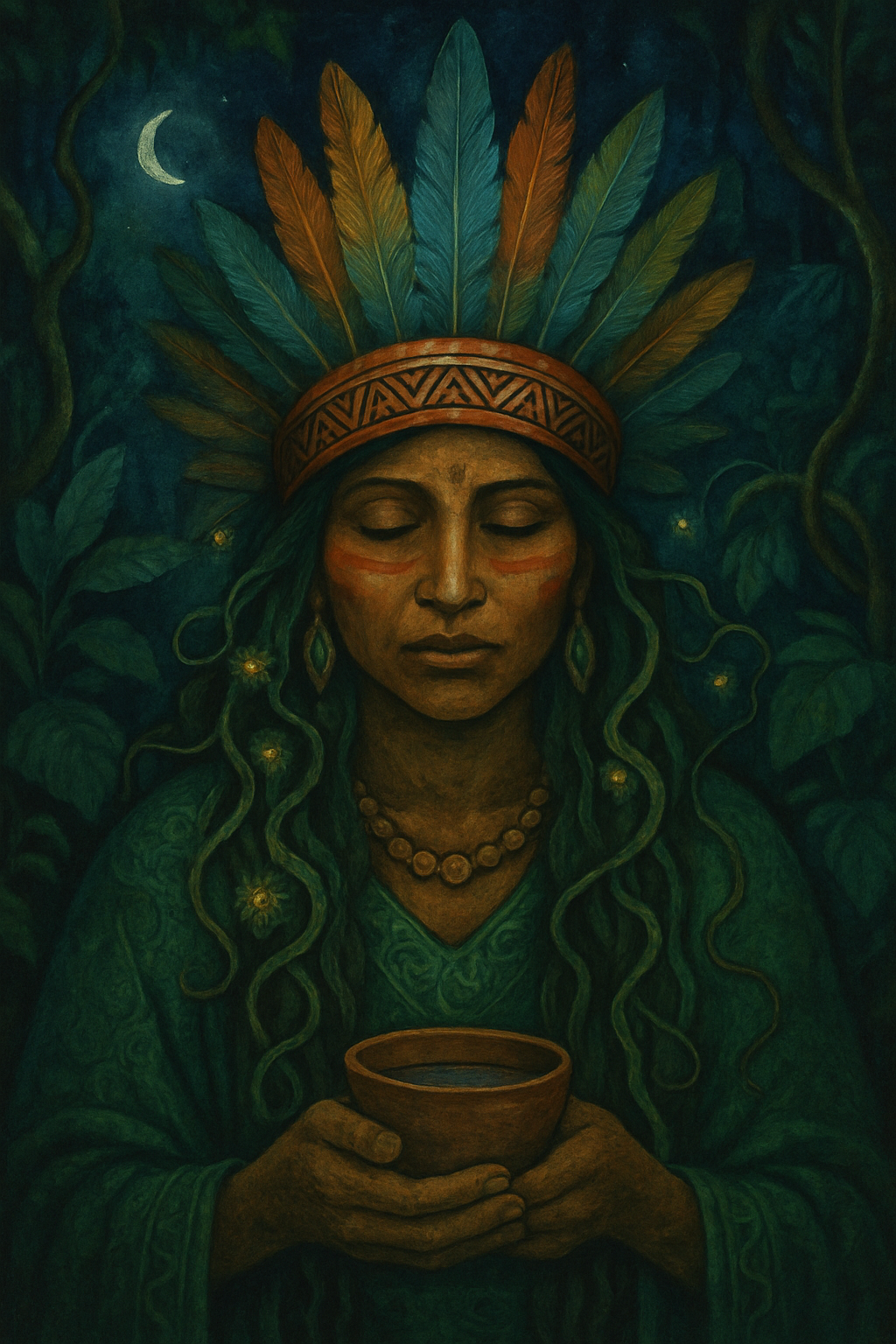 Mother Ayahuasca - Mother Earth - Ayahuasca vine - Plant Medicine by Tai
Mother Ayahuasca - Mother Earth - Ayahuasca vine - Plant Medicine by TaiPreparation is a critical aspect of the ayahuasca experience, ensuring that participants are physically, mentally, and spiritually ready for the journey ahead. One key preparatory step involves following a specific diet and avoiding processed foods, spicy foods, animal products, and addictive substances like alcohol and recreational drugs for at least two weeks prior to the ceremony. This dietary regimen helps to cleanse the body and mind, enhancing the overall experience.
Spiritual and psychological preparation are equally important. To enhance their focus and spiritual connection, participants are encouraged to spend time in nature, engage in practices like meditation or yoga, and abstain from sexual activity.
Each individual’s experience with ayahuasca is unique, emphasizing the need to remain open to whatever unfolds during the ceremony. By approaching the ayahuasca encounter with respect and mindfulness, participants can maximize the therapeutic and transformative potential of ayahuasca.
Summary
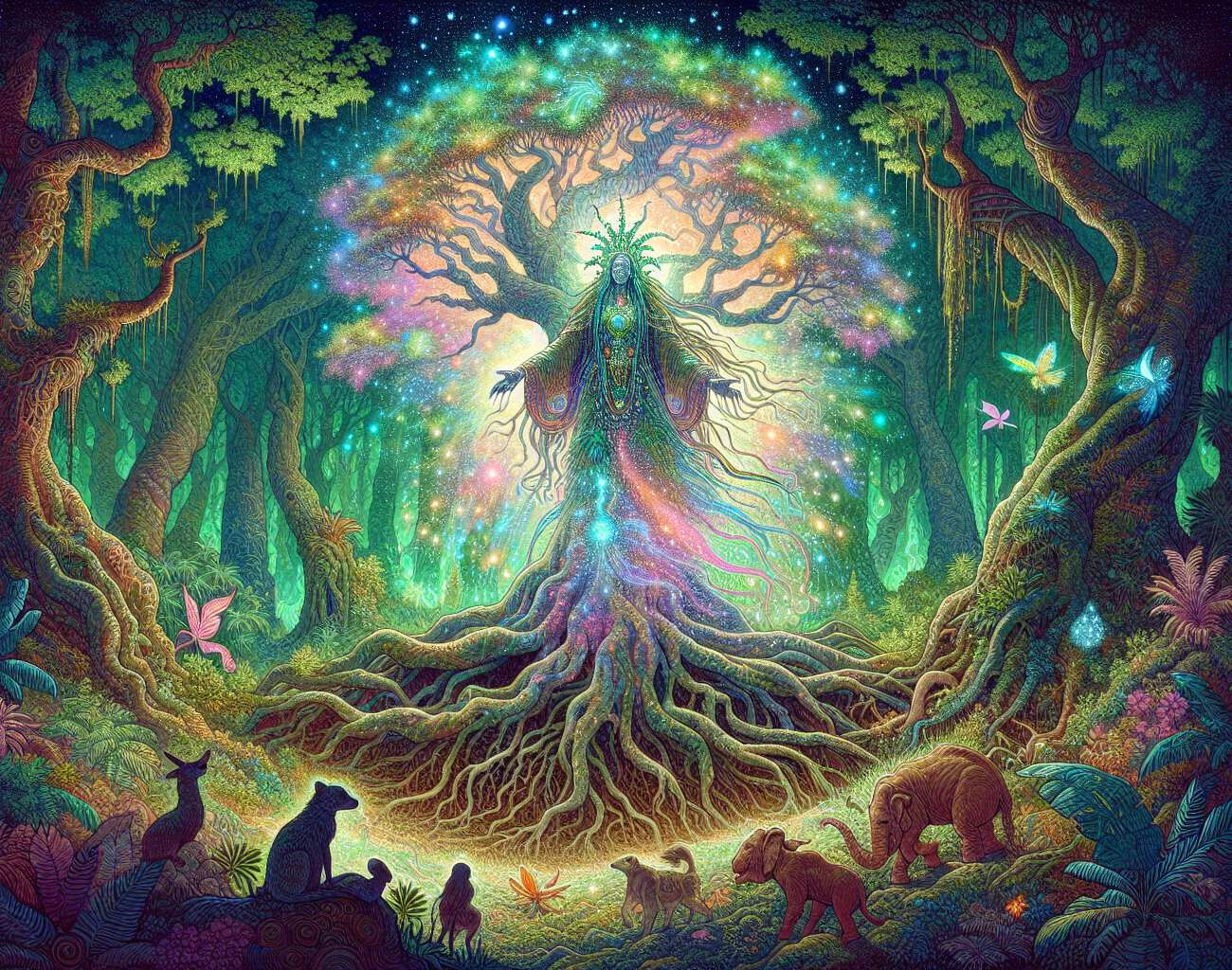 Mother Ayahuasca - Mother Earth - Spiritual World
Mother Ayahuasca - Mother Earth - Spiritual WorldMother Ayahuasca offers a profound and multifaceted experience that bridges ancient traditions with modern therapeutic practices. Its potential benefits for mental health, addiction treatment, personal healing, and spiritual growth are supported by both anecdotal evidence and rigorous scientific research. However, the use of ayahuasca also comes with risks and ethical considerations that must be carefully navigated.
In summary, Mother Ayahuasca represents a powerful tool for personal growth and personal healing. By approaching its use with respect, mindfulness, and an awareness of the cultural and legal landscape, individuals can unlock its full potential. Whether for mental health issues, spiritual exploration, or addiction recovery, ayahuasca continues to captivate and transform those who seek its wisdom.
COMING SOON MY VISIT TO SOUTH AMERICA- IQUITOS, PERU
Related Articles
Click below and views more than 600 pieces of spiritual artwork

Spiritual Books
If you enjoy the articles on this website, you will also appreciate the short stories in the books below. Click here and continue the journey.



